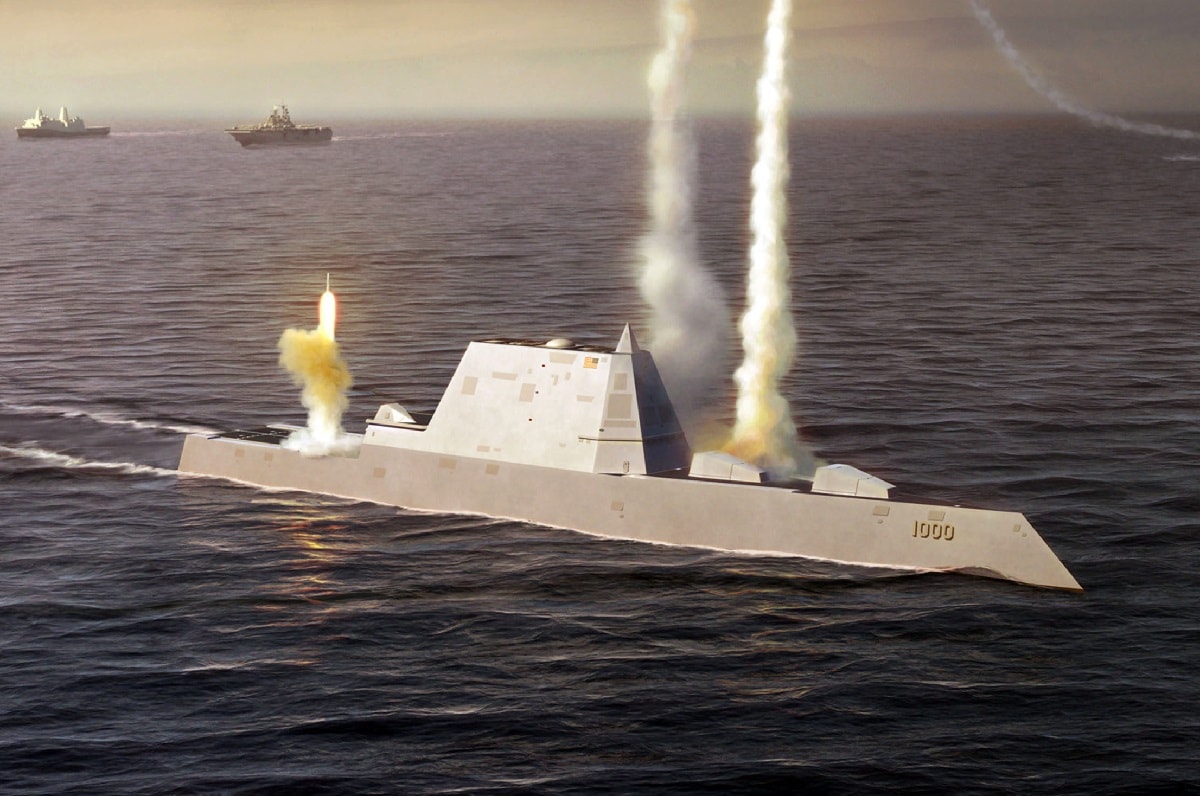An old joke about a boat is that it is a “hole in the water you throw money into,” and if that is even remotely true, the U.S. Navy’s Zumwalt-class could be described as a money pit in the ocean.
Originally thirty-two of the guided-missile destroyers, which were designed as multi-mission stealth ships with a focus on land attack, were planned. As costs overran estimates the quantity was reduced to just three vessels – which in turn drove the per-unit cost up. Each of the U.S. Navy’s three completed stealth destroyers cost a reported $4.24 billion, exceeding the per-unit cost of even a nuclear-powered Virginia-class submarine.
The Navy didn’t even get much bang for its buck – at least not as planned.
The vessel was designed with an advanced 155mm gun, which could fire an equally advanced Long-Range Land Attack Projectiles (LRLAP) at targets up to 83 nautical miles away. While it sounded good in theory, the weapon was water-cooled and yet could only fire about 10 rounds per minute per gun – and each of those shells cost between $800,000 and $1million, nearly as expensive as more precise, longer-range, and harder-hitting cruise missiles, making it cost-prohibitive to use.
Cost was just one of the issues, however: the Zumwalt-class had fewer cells (80) to pack land-attack missiles than Arleigh-Burke-class destroyers (96), Ticonderoga-class guided-missile cruisers (122), or Ohio-class cruise-missile submarines (144)—all of which were cheaper, and the last of which is stealthier.
The Navy may have found a solution: hypersonic missiles.
According to the latest budget documents, the Department of the Navy has been exploring ways of employing the Conventional Prompt Strike (CPS) Weapon onto all three of its Zumwalt-class destroyers. According to the Navy, this could enable “a flexible, surface combatant-launched, long-range strike capability that leverages stealthy design to achieve precision strikes with low susceptibility to counter targeting.”
The Navy will modify the vessels and install a cold launch system, while each of the three destroyers could carry up to a dozen rounds. In April, Chief of Naval Operations Adm. Mike Gilday said that the Zumwalt-class could be the first U.S. Navy vessel to be armed with hypersonic weapons, and the capability could be in place by 2025.
The Zumwalt-class has been seen as a platform seeking a mission, and now instead of being used as a land attack vessel that can operate in littoral waters, if armed with hypersonic weapons the destroyers could transform to a fairly robust stealthy surface combatant. Given that each will only carry a dozen rounds they’d have to find and destroy their targets and then get out, but the little warships could actually be ideally suited to such quick-strike missions. The ability of the hypersonic weapons to fly at speeds as great as Mach 5, along with their ability to maneuver in flight, could make them hard to counter.
Peter Suciu is a Michigan-based writer who has contributed to more than four dozen magazines, newspapers and websites. He regularly writes about military small arms, and is the author of several books on military headgear including A Gallery of Military Headdress, which is available on Amazon.com.

